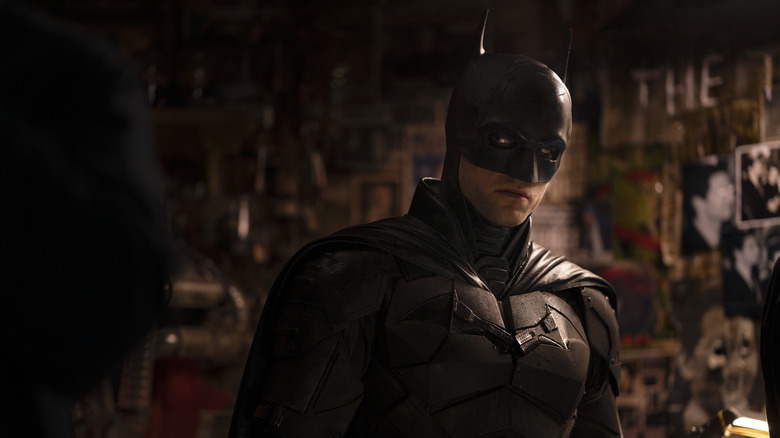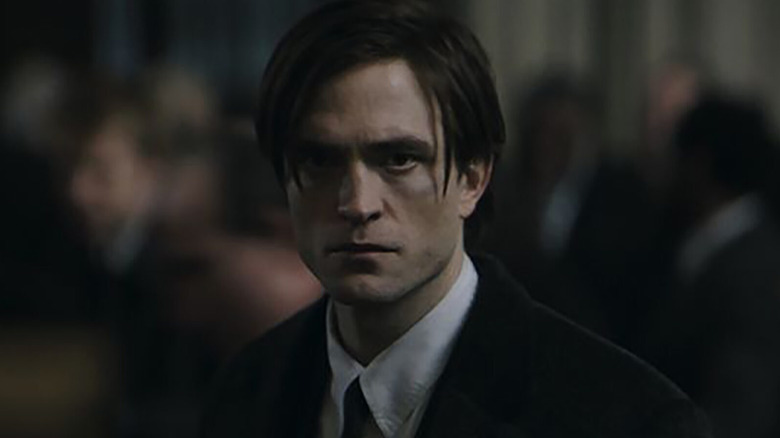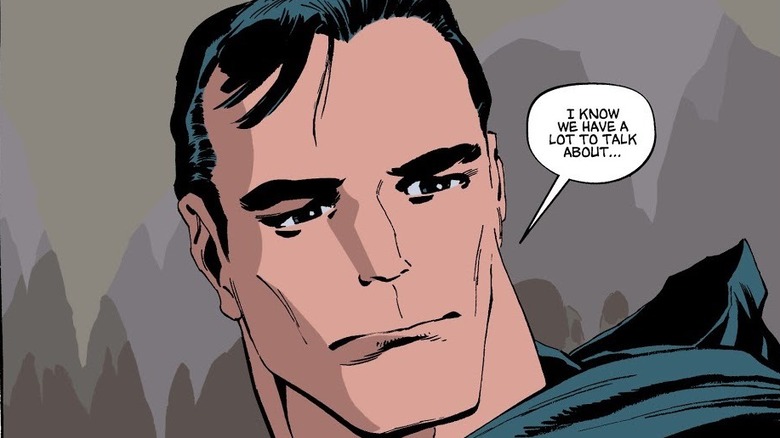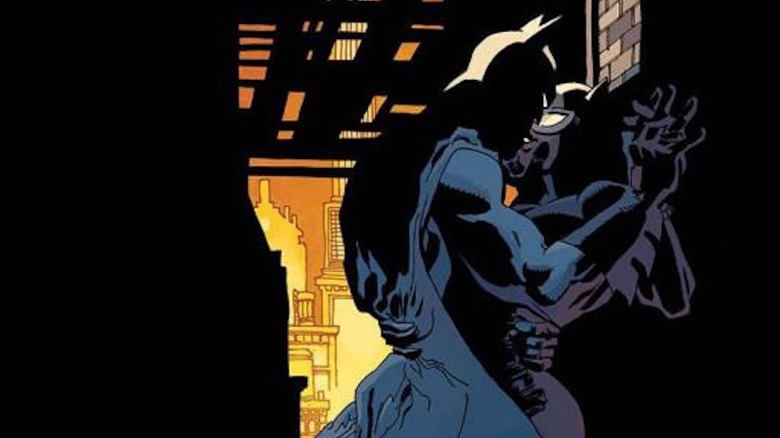Robert Pattinson's Batman Is Ripped Straight From Some Of The Best Comics Ever Printed
This will contain minor spoilers for The Batman.
Originally published in the late '90s, "Batman: The Long Halloween" by writer Jeph Loeb and artist Tim Sale is one of the most revered and definitive looks at the second year of Bruce Wayne's tenure as Batman. The Falcone and Maroni mob families still rule Gotham. Jim Gordon is only a Captain. Harvey Dent is still an optimistic — but flawed — District Attorney working to make Gotham a better place. And Bruce Wayne is still trying to figure out how the hell he can operate as Batman. The story takes place over an entire calendar year, with a mysterious serial killer murdering on every holiday. The deaths start on Halloween, hence the title. The book was followed up with "Batman: Dark Victory," telling the tale of Dick Grayson's arrival as Robin, and other crimes and murders as well.
They're both slick and stylish mystery stories, well-told and perhaps some of the greatest Batman stories ever printed. The influence of these stories across different iterations of Batman is widespread. Christopher Nolan lifted elements for "The Dark Knight," other elements have appeared in animated media, and a two-part animated adaptation of the comic was released in 2021. But none of these have quite captured the look and feel of the Jeph Loeb/Tim Sale iteration of Bruce Wayne/Batman.
But that changes with "The Batman."
Robert Pattinson's Bruce Wayne
Robert Pattinson is the sort of actor who swings for the fences in every role he's taken. Sure, he's spent time as both a heartthrob and an object of scorn, but in every case, he's given his all as an actor. Rising to prominence in 2005's "Harry Potter and the Goblet of Fire" as the ill-fated Cedric Diggory, it's hard to peg Pattinson from one role to the next. His turn as Edward in "Twilight" is as different as you can get from his performance in "The Lighthouse." There are no half-measures.
In "The Batman," Pattinson imbues Bruce Wayne with a scarred vulnerability not seen in the other versions of the caped crusader. Michael Keaton was haunted, certainly. Christian Bale's Batman was driven. And while Robert Pattinson's take on the character is driven and haunted, for sure — they're important ingredients to any Batman recipe — the vulnerability he brings, like a boy-barely-a-man wracked with trauma, is something that connected me to the onscreen version in a way that made me feel like he was the Batman I followed in "The Long Halloween" and "Dark Victory."
Tim Sale's rendering of Bruce Wayne has moments of that resolute sadness that Robert Pattinson is able to imbue within his take on the character. To me, it felt like Pattinson had allowed Tim Sale's Bruce Wayne to step right off the page and onto the screen. There are specific moments that brought these to the forefront. Particularly, the quiet ones. These low-key moments make the movie, and if you ask me, the action scenes actually slow the whole thing down.
Wayward orphans
Throughout "The Batman," Bruce Wayne is confronted with kids in situations that align with his own past, victims of violence that cost them their parents. The plaintive look that Robert Pattinson gives each of them exudes all of the empathy he feels for them. He carries the guilt of his upbringing and situation very much the way the Riddler wants him to, but it manifests in ways the villain couldn't predict. That guilt is never far from Robert Pattinson's face as he stares at these children in horror, reliving his trauma over and over and over again.
Throughout "Dark Victory," this connection between Bruce and one orphan in particular, Dick Grayson, is the beating heart of the story. Eventually, Bruce Wayne takes this young orphan in and trains him as Robin. And it's the most believable version of Robin's origin I've ever read. This is a Bruce Wayne who understands the value inherent in a kid like Dick and wouldn't dream of talking him out of donning his own cape and cowl. He knows the drive and yearning that causes a kid in that situation to put on a mask and fight. Robert Pattinson wears all of this Tim Sale-storytelling on his face through the entirety of "The Batman."
Robert Pattinson gives us a Batman that I could actually believe would adopt a Robin into his crime-fighting family, and it's a thrilling possibility.
For fans of Batman, I'm sure it's our shared hope that we can finally get a great take on Robin in a sequel. After all, director Matt Reeves and Robert Pattinson have put all of the pieces on the table in a way that make sense for Bruce Wayne's story arc.
Other ties
"The Batman" borrows more elements from "The Long Halloween" than just Robert Pattinson's physicality and temperament for Bruce Wayne. There's also his relationship with Catwoman and her connection to the crime families of Gotham, both of which are lifted from these comics. The fleshing out of the Falcone crime family, and the concept of the people protecting that family being killed, is also something that feels sprung from the pages of these comics.
"Dark Victory" also tells a tale of a Batman losing himself to darkness, and being brought a bit further into the light. Dick Grayson does it in that story, though, which is why I hope Bruce can have a larger arc in that direction from this movie to the next.
Whatever your interest, reading these comics will give you a better understanding of this new Bruce Wayne, and the influences Robert Pattinson and Matt Reeves seem to be leaning on.
"The Batman" is in theaters now.



